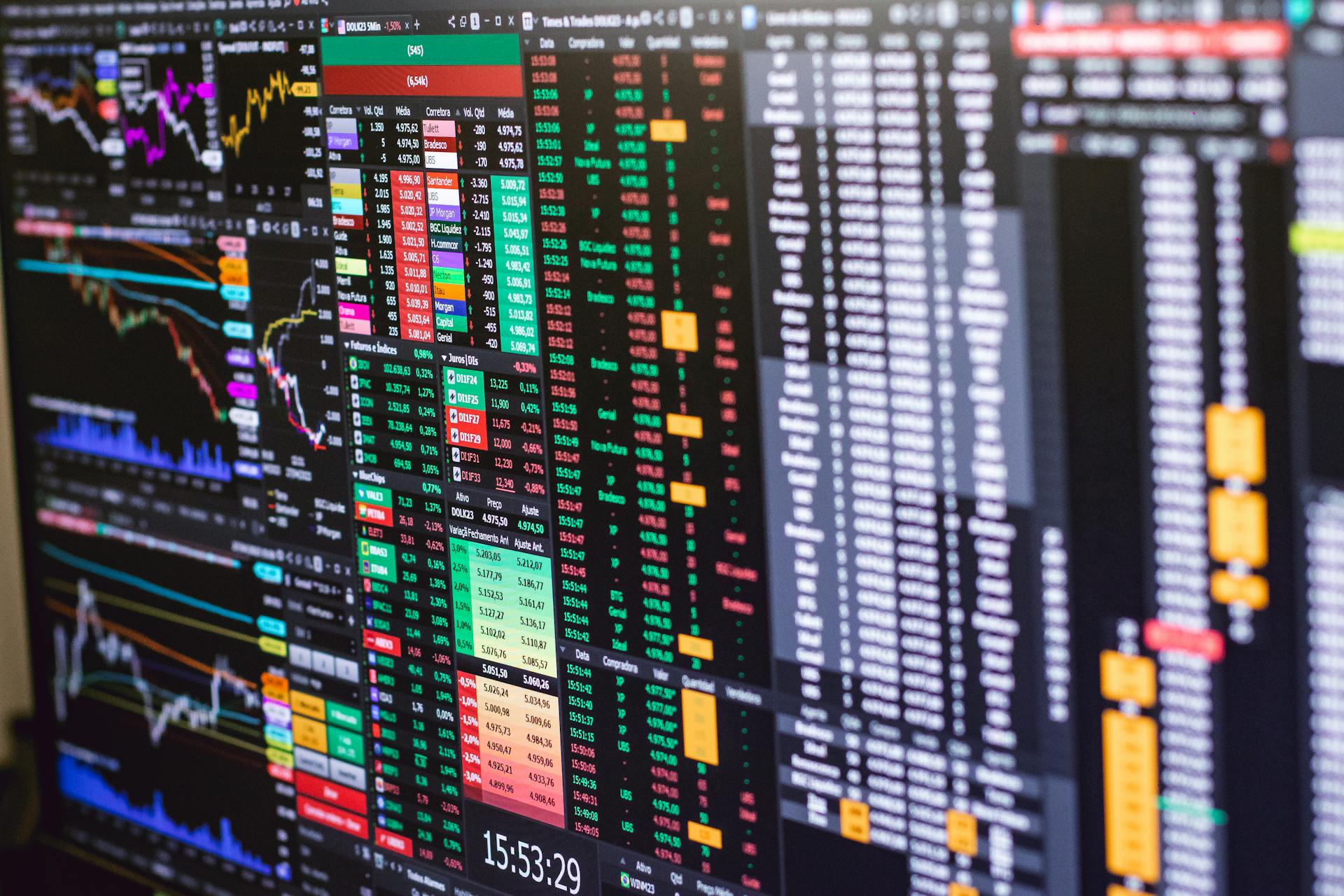
Derivatives are complex financial instruments that have become increasingly popular among investors and traders in recent years. But what are derivatives, exactly? Put simply, derivatives are contracts that derive their value from an underlying asset or group of assets. This underlying asset could be anything from a stock or bond to a commodity like oil or gold.
There are various types of derivatives, including futures, options, swaps, and forwards. Each type has its own unique features and risks. For example, futures contracts involve an agreement to buy or sell an asset at a predetermined price on a specific date in the future. Options contracts give the buyer the right—but not the obligation—to buy or sell an asset at a predetermined price within a certain time frame. Swaps involve trading cash flows between two parties based on different interest rates or currencies. And forwards involve agreeing to buy or sell an asset at a predetermined price on a specified future date. While these instruments can offer opportunities for profit, they also come with significant risks that investors must understand before getting involved.
Broaden your view: Trade Futures Contracts
Understanding What Derivatives Are and What Makes Them Risky
What are derivatives? Derivatives are a type of financial contract. They derive their value from an underlying asset, such as oil, gasoline, or the 10-year treasury note. When a buyer agrees to purchase a derivative contract, they are essentially agreeing to buy or sell that underlying asset at a specific price on a specific date in the future.
One of the things that makes derivatives risky is their reliance on the prevailing price of the underlying asset. If the price of that asset changes significantly between when the agreement is made and when it comes time to execute it, one party could end up with a significant loss. Additionally, because there are so many different types of assets that derivative contracts can be based on - interest rates, currencies, commodities - they represent an incredibly diverse asset class.
Finally, what really makes derivatives risky is their sheer complexity. There are so many different types of derivative contracts out there, each with their own unique rules and requirements. This means that even someone who is well-versed in one type of derivative may not understand another one at all. For this reason, it's important to carefully consider whether investing in derivatives is right for you before jumping in headfirst.
Curious to learn more? Check out: Credit One Credit Cards Review
Discover the Many Varieties of Derivatives in Finance
Derivatives are notorious derivatives that played a major role in the 2008 financial crisis. Collateralized debt obligations (CDOs) bundled debt such as auto loans, credit card debt, and business debt into mortgage-backed securities. When the housing market collapsed, these securities became worthless and their promised repayment defaulted. One of the most common types of derivatives is asset-backed commercial paper, which is valued based on a lower risk than other types of corporate debt.
Currency swaps and interest rate swaps are two examples of derivatives used to hedge currency risk. A fixed-rate coupon stream is exchanged for a variable-rate payment stream in order to manage potential losses from changes in foreign currency values or interest rates. Credit default swaps were also implicated in the 2008 financial crisis when holders of municipal bonds, corporate debt, or mortgage-backed securities purchased protection against default. When the MBS market collapsed, CDS holders had to be bailed out by the federal government and American International Group.
Futures contracts are another influential type of derivative used for commodities like gasoline or agricultural products, as well as for interest rates and exchange rates. Ultimately, a derivative simply refers to any contract with an agreed-upon price at a specific date that is used to hedge risk or speculate on future prices. Although many OTC derivatives have been regulated more closely since the Dodd-Frank Act was passed in response to the 2008 financial crisis, lot forwards and other types of derivatives continue to play an important role in modern finance.
You might enjoy: Different Types of Pet Insurance
What Are the Main Benefits and Risks of Derivatives?
Benefits of derivatives include their ability to be used as trading instruments, providing investors with greater flexibility and opportunities for profit. Derivatives also allow traders to hedge against market risks, such as currency fluctuations or commodity price changes. Furthermore, derivatives can help to increase liquidity in markets by allowing traders to buy and sell assets without actually owning them.
However, investing in derivatives also carries risks. One of the main concerns is the potential for losses if a trader's prediction turns out to be incorrect. Additionally, some derivatives are complex and difficult to understand, making it easy for inexperienced traders to make mistakes. There is also the risk of counterparty failure - if one party is unable to fulfill their obligations under a derivative contract, the other party could suffer losses.
According to CME Group Crude Oil futures volume data from end-June 2021, the popularity of derivatives continues to grow. As with any investment strategy, it's important for traders to educate themselves on the risks involved before clicking "accept" on a new trade. By doing so, they can enhance their chances of success while minimizing potential losses. As more data becomes available through organizations like International Settlements OTC Derivatives Statistics, investors will have access to better information that can inform their trading strategies and marketing efforts going forward.
Suggestion: Class B Shares Private Company
Understanding the Practical Applications of Derivatives

Derivatives involve significant complexity, and they aren't generally suitable for simple buy-low-sell-high or buy-and-hold investments. These financial instruments are contracts between two parties involved in a derivative transaction. The value of a derivative depends on the price of an underlying asset, such as a stock, bond, commodity, or currency.
An investor believes that the assets' price will change substantially in the future and makes bets accordingly. They can earn potential gains by taking advantage of these changes in price through derivatives contracts. However, they need to bear potential losses too if their assumptions prove wrong. Margin-powered meaning investors could spread money over several derivatives, thus optimizing returns with greater risk exposure.
However, making the wrong bet on a derivative contract can lead to immense losses beyond an investor's financial position. So it is crucial to understand practical applications before investing in them. In conclusion, derivatives can be powerful tools if used correctly and with caution; otherwise, they carry significant risks.
Expand your knowledge: Fund Derivative
Discovering the Magic of Derivatives - Unveiling the Basics
Derivatives are complex financial contracts based on an underlying asset group. These assets can include stocks, bonds, commodities, currencies, interest rates, and market indexes. Investors enter into derivative contracts to state terms for buying or selling the underlying asset at a future date and price.
The underlying asset is what gives value to the derivative contract. Derivatives can be traded over-the-counter (OTC), meaning they are privately negotiated between parties, or on an exchange such as the Chicago Mercantile Exchange, one of the largest derivatives markets in the world. Exchange-traded derivatives are standardized OTC derivatives that are traded through a brokerage-dealer network.
Investors purchase derivatives to hedge against risk or speculate on future price movements of the underlying asset. While they can be beneficial tools for investors, there is also counterparty risk involved when entering into a derivative contract. Understanding the basics of derivatives can help investors make informed decisions when utilizing these financial instruments in their portfolio management strategies.
A different take: Bhp Billiton Stock Quote
Frequently Asked Questions
What is the difference between futures and derivatives?
Futures are a type of derivative that obliges the buyer to purchase or sell an asset at a future date and price, while derivatives are financial contracts whose value is derived from an underlying asset. Understanding the differences between these two financial instruments is crucial for informed investment decisions.
What are underlying assets for derivatives?
Underlying assets for derivatives are the assets that determine the value of the derivative contract. These can include commodities, stocks, bonds, currencies, and indices.
What are the pros and cons of derivatives?
Pros of derivatives include the potential for high returns and risk management, while cons include complexity and the possibility of significant losses. It is important to understand the risks involved before investing in derivatives.
Why do investors use derivatives?
Investors use derivatives to manage risk and enhance returns by hedging against potential losses or leveraging their investments.
What are derivatives and their types?
Derivatives are financial instruments that derive their value from an underlying asset or security. The most common types of derivatives include futures, options, swaps, and forwards.
Featured Images: pexels.com


